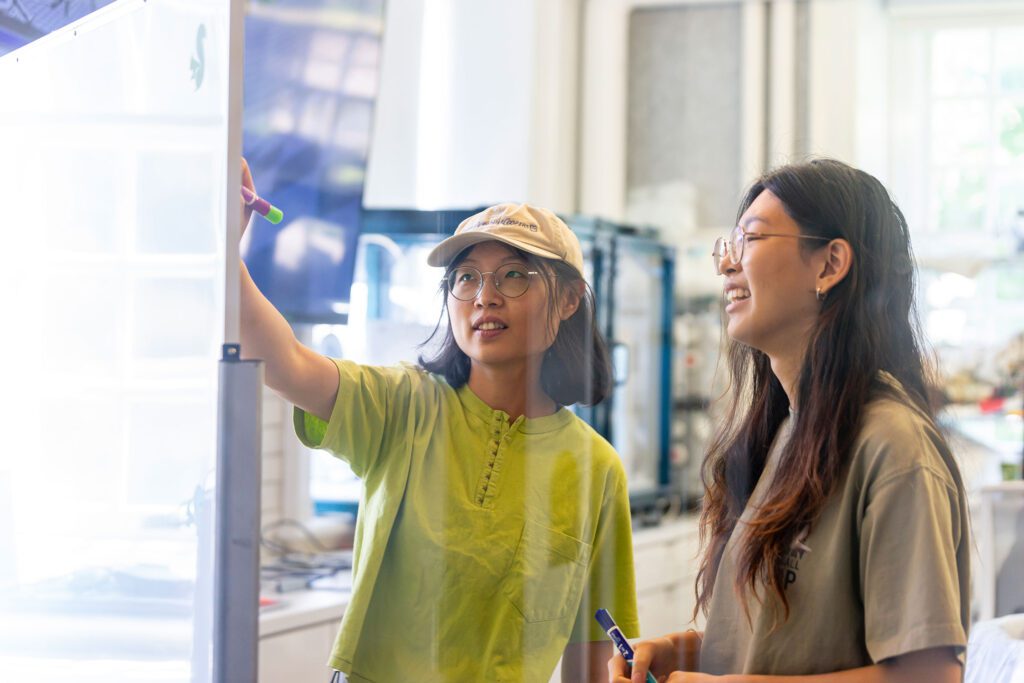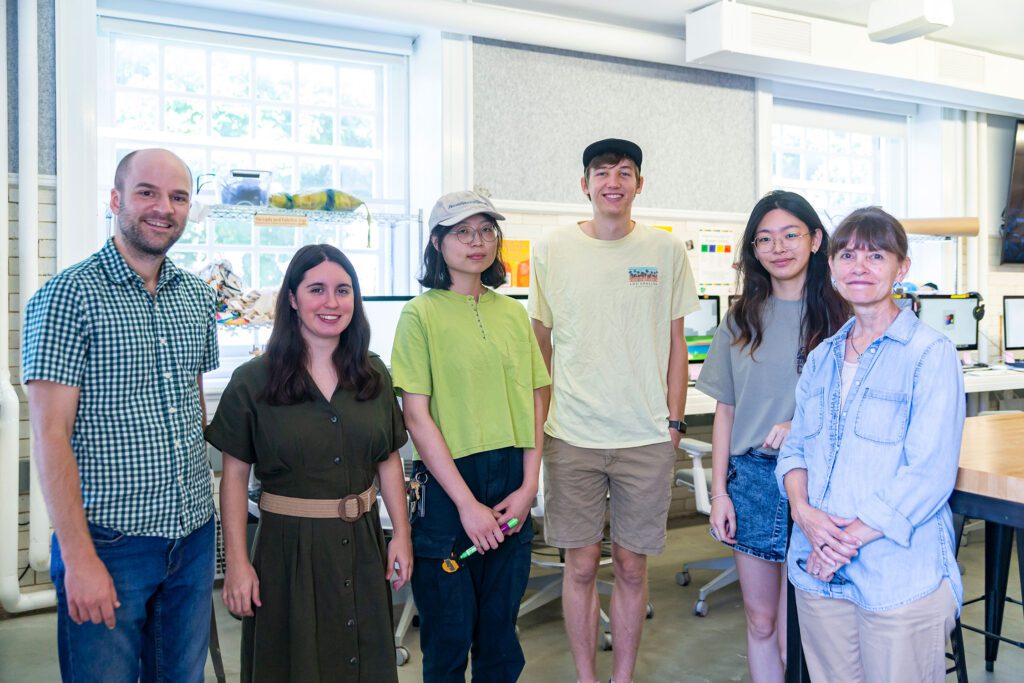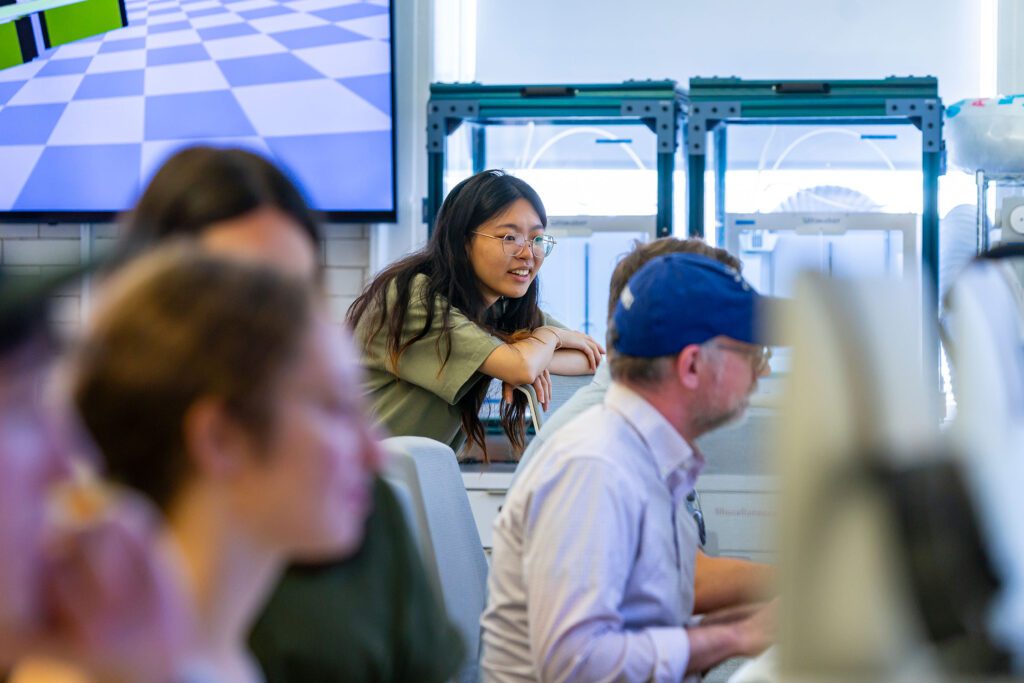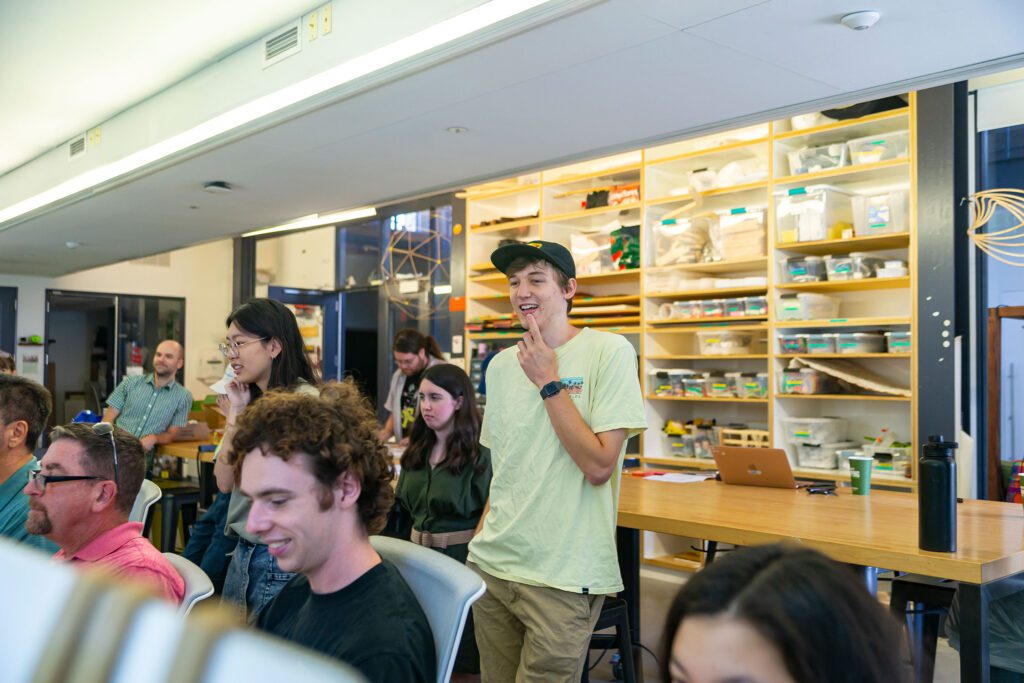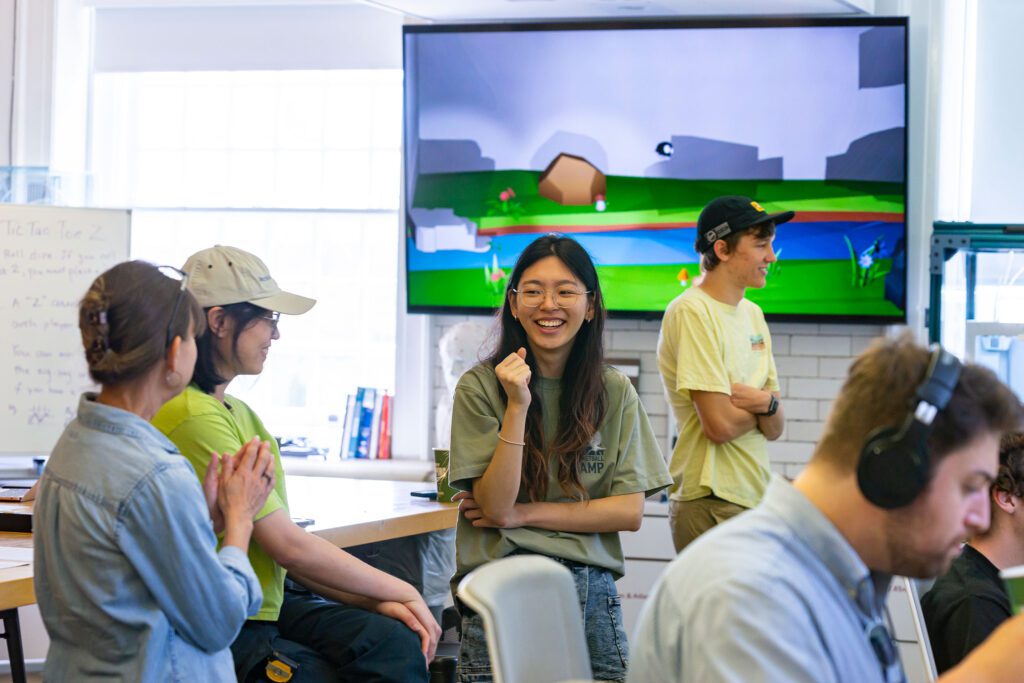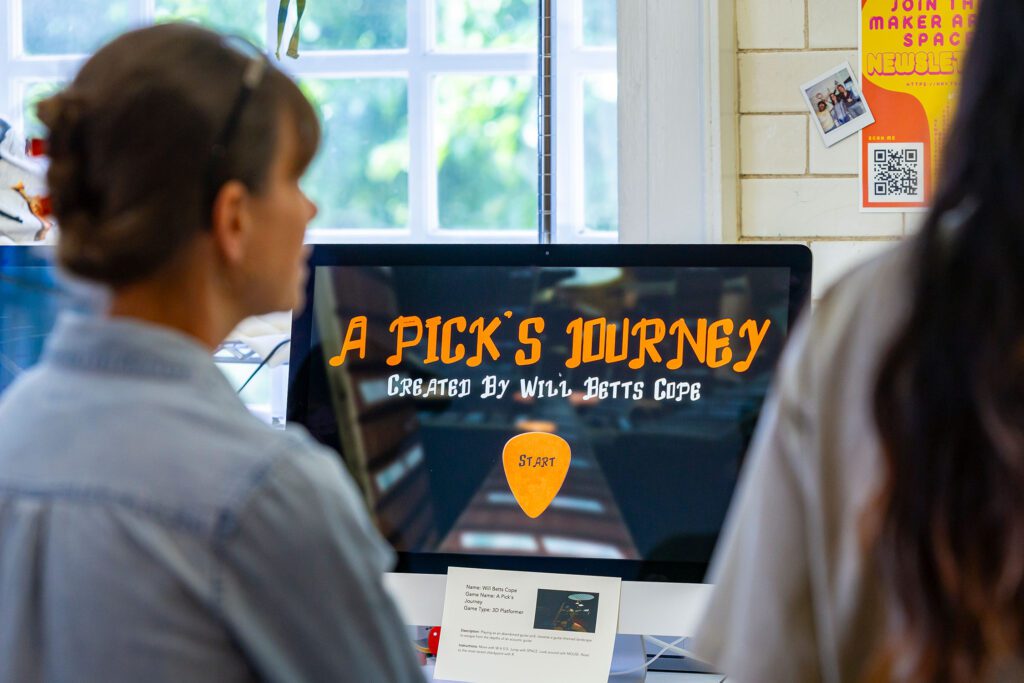As far as project objectives go, “have fun” sounds like an easy one. But as the four students who participated in this year’s Design + Make Summer Fellowship in Haverford’s VCAM facility discovered, there’s a lot more to that task than meets the eye.
Over the eight-week course, students were challenged to design and build an original video game, complete with graphics, music, and controls. “Coding was just a part of it,” says Kent Watson, VCAM’s arts, education, and programs manager, who has overseen the fellowship since its inception in 2020. Each year he selects a different theme that immerses students in design and prototyping; in the past, students have built prosthetics, toys, and chairs.
This was the first year, Watson says, that the output wasn’t something you could hold in your hands. He enlisted Sarah Fay Krom, a visiting artist and assistant professor of practice of interactive media, to develop a curriculum. “Learning by making is sort of a motto of game courses throughout the world,” she says. “Kent was thinking in this direction and could see there was a connection to the Maker Arts Space. He understood the potential of that space. The creative spirit gets stretched when it’s approached from a space like VCAM.”
Although the games themselves would be confined to a computer screen, the basic principles of good design remained in play. “The fellowship started off with a broad theoretical exploration of games—where they come from, why we play them, what makes a good one,” says Watson. “This laid the groundwork for our skill-building throughout the rest of the fellowship.”
In the first two weeks of the program, students studied game theory and played and built board games to learn to think from a designer’s perspective and answer questions like: What are the rules? How much of winning depends on luck and how much on strategy? What makes it fun?
“I thought I knew what’s fun because I play games,” says Will Betts Cope ’26, one of four students who was selected for the fellowship. “But game theory ended up being really helpful.” In particular, he says the importance of premise stood out. “It may be that the core mechanics — how your player moves and what they have to do — are fun, but if your premise is bad, none of the rest makes sense,” says Betts Cope ’26, who is double majoring in computer science and music.
Students had one week to brainstorm concepts, then spent the remainder of the fellowship developing, soliciting feedback, and refining their games. “Everybody went in such vastly different directions, and that was really fun to see,” says Watson.
Betts Cope modeled his game after a classic guitarist’s problem: The player is a lost guitar pick trying to find the way out of an acoustic guitar. Another one of the video games, developed by Lina Luo ’27, a rising sophomore who has not yet declared a major, focuses on a main character who can move only by jumping from shadow to shadow. Called “Shadow Journey,” the game requires players to figure out how to manipulate light sources to cast shadows in the correct path.
One Friday in late July, members of the community — including students who participated in the fellowship in years past — gathered in VCAM’s Maker Arts Space to take the video games for a test drive. “Based on the attendance and reaction of people who were playing, it appeared to go quite well,” says Krom. “It was a very lively couple of hours.”
For their part, the students enjoyed the opportunity to see their games tested in real time. “It seemed like people enjoyed playing it,” Betts Cope says. “A few people who never played before beat it, and that was very satisfying because I had worried that it was too hard.”
Luo, meanwhile, discovered that “Shadow Journey” might be harder than she expected for many players. “A few people won,” she says, although the game currently only has two levels, all she had time to create.
The immersive nature of the Design + Make summer fellowship offers students a unique opportunity to take a theme and run with it, Watson says, and each of this year’s four fellows walked away very much appreciating what goes into the design of a playable experience.
“It was great to be learning with other people, and in such a small group,” says Betts Cope. “It wasn’t just me alone pulling my hair out over figuring this out. I thought about making a game but never had the motivation or drive to do it on my own.”
As for the future of his guitar pick game, Betts Cope says he’s considered putting it up on a free games website, but also “wouldn’t be upset if I kept it for myself as a cool thing I did one summer.”
Fun accomplished.
Photos by Patrick Montero.

